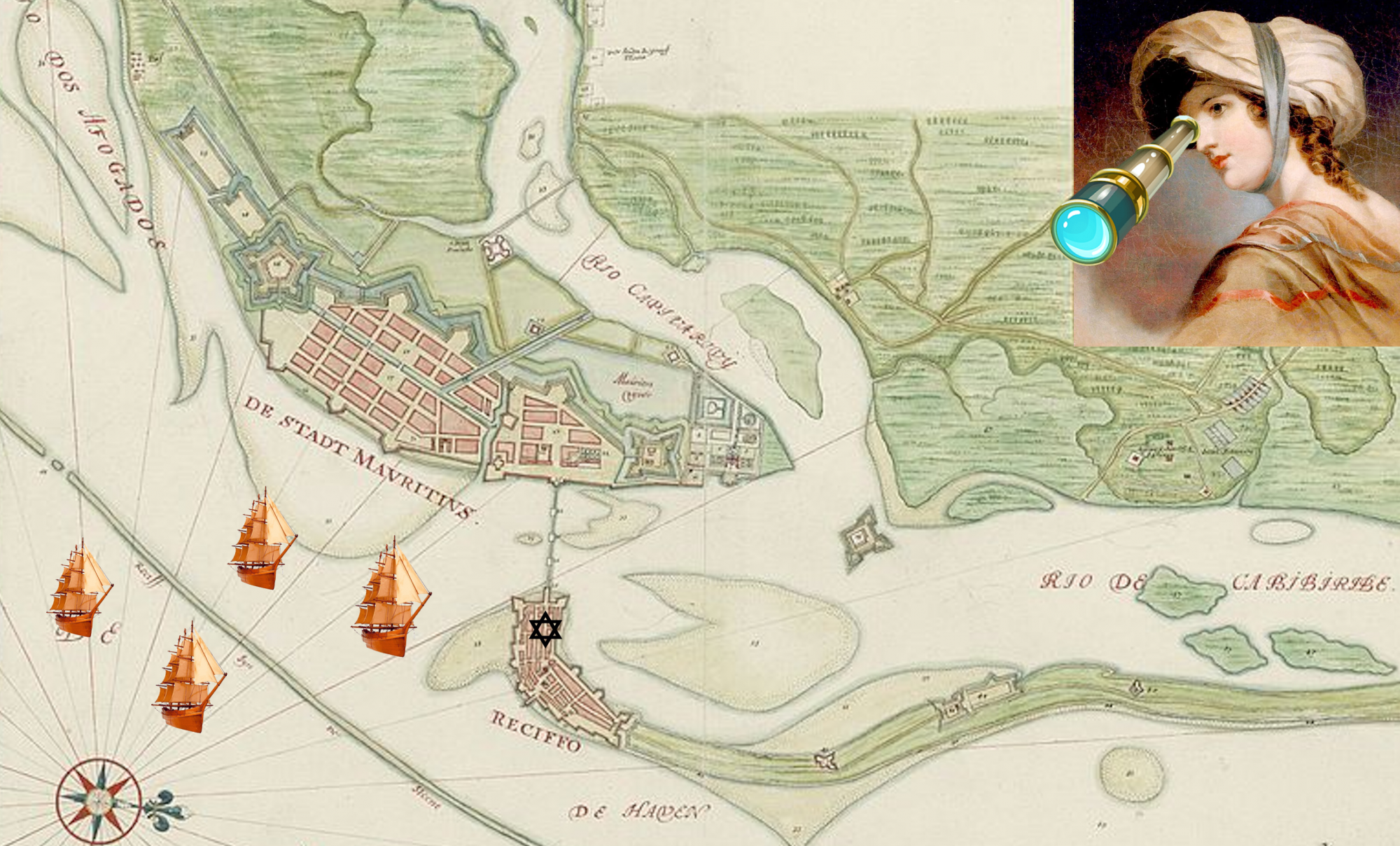

While most early American Jews arrived from Europe, some Jews came all the way from the Holy Land to the Americas! Mostly these men who were fundraisers. They helped support poor Jews in the Holy Cities of Hebron, Tiberias, Safed, and Jerusalem, all of which were then part of the Ottoman Empire. Because colonies like Curaçao were so wealthy, even famous Rabbis like the CHIDA (Haim Yosef David Azulai) obtained letters of introduction to raise money from the island’s Jewish community. Although he never got the change to travel there in person, he did travel to London, Paris, and Amsterdam.
When the CHIDA arrived in Amsterdam in Spring of 1778, the city’s Jewish community was suffering. The stock market had crashed, and many lost money or even entire fortunes. Yet the city’s religious celebrations were still magnificent. At the Chief Rabbi’s house, the CHIDA found elaborate sugar sculptures depicting the palace of Ahasuerus with Esther on a couch, and Haman hanging in the gallows. Nearby a table was piled high with fruit, cheese, and pickles, all made from sugar and labelled “Kosher for Passover.” Probably some of this sugar had come from plantations in the Dutch colony of Suriname, on the northern coast of South America. Many of Amsterdam’s Jews had gotten wealthy growing Surinamese sugar. Food connected Jews in Europe and the colonies, and kosher food played an important role in early America Jewish life.

Karigal.” Courtesy Yale University Art Gallery
One Rabbi who would visit the colonies like Suriname that grew the sugar the CHIDA saw at the Chief Rabbi’s house was Hakham Raphael Hayyim Issac Karigal (1733-77). Born in Hebron, Karigal was ordained as a rabbi at the age of seventeen and set out in 1754 on several voyages. He traveled to Constantinople (1754-56), Curaçao (1761-63), Hebron, (1764-68), London (1768-71), Jamaica (1771-72), the British colonies including Newport (1772-73), and finally Suriname and Barbados (1773-77). In addition to fundraising, he taught in Jewish schools and led services for various communities.

While in Newport, Rabbi Carigal preached a sermon in Spanish for Shavuot that was so popular that members of the Lopez family had it translated into English and published. This was the first Jewish sermon published in what would become the United States.
Activity

When the CHIDA visited Amsterdam he was wowed by the sugar sculptures he saw. Sugar was one of the most important crops from the Americas and it changed the way people around the world ate. In the sixteenth century, sugar belonged on the tables of the wealthy. People even gave sugar loaves as presents to kings to earn their favor. Over the course of the eighteenth century, however, so much sugar was being grown in the colonies, that sugar prices fell. Suddenly, middle class and poor people could afford to make recipes with the sweetener. The rich responded by using sugar to create sculptures that required time and a lot of skill. The video below with Food Historian Tasha Marks explains how you can create your own sugar sculpture!
Recipe for people in the US: 16 oz. powdered (“confectioners”) sugar, 2 tablespoons gum tragacanth, 1/4 cup rosewater.
NOTE: If you want to soften it, Crisco is similar to Trex “vegetable fat” and is kosher.
Recipe for people in UK/EU: 454g icing sugar, 28g gum tragacanth, 61ml rosewater.
NOTE: Corman MGV 40 Vegetable Fat is certified kosher by the London Bet Din.
Don’t have a 3D printer to make a mold? Try candy or chocolate molds. They have sets to help you create a house or palace if you want to recreate what the CHIDA saw. Or you can use cookie cutters!

